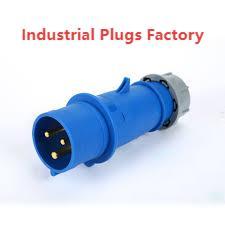Nante Industrial Plug Factory Performance and Field Reliability Guide

Selecting a supplier requires clarity about manufacturing capabilities, and a modern Industrial Plug Factory often blends automated assembly, skilled technicians, and rigorous inspection to produce dependable connectors. Early engagement with manufacturers helps align design, tolerances, and test plans so scale-up proceeds without costly redesigns or unexpected delays.
Mapping the production journey
A transparent production workflow—from raw material intake through plating, molding, assembly, and final testing—lets buyers anticipate lead times and identify potential bottlenecks. Minimizing subcontracted processes reduces handoffs and improves accountability when issues arise.
Critical material and surface decisions
Material choice influences electrical performance and longevity. Copper alloys, contact platings, and insulating polymers must be specified with environmental exposure in mind. Protective surface finishes and controlled storage limit early contamination and maintain consistent contact resistance.
In-process testing and full traceability
Robust factories implement first-article inspections, statistical process control (SPC), and calibrated test rigs for mechanical endurance and dielectric strength. Traceability that links serials or lot numbers to material batches and test records streamlines warranty handling and failure analysis.
Design-for-manufacture and assembly (featuring Amphenol-style thinking)
Designs that emphasize self-locating features, snap-fit housings, and reduced special fasteners shorten assembly time and lower error rates. Prototype runs with production tooling reveal tolerance stacks and inform fixture improvements before full production begins.
Environmental and compliance testing pathways
Beyond basic acceptance tests, accelerated life testing, salt-fog exposure, and vibration assessments reveal vulnerabilities that matter in harsh applications. Third-party lab reports and certification documents strengthen market acceptance and ease regulatory entry.
Supply chain resilience and sourcing strategy
Evaluate how suppliers secure critical subcomponents and whether alternate sources exist for long-lead items. Good manufacturers maintain buffer stocks, communicate lead-time histories, and provide contingency plans for demand surges or material shortages.
Customization, tooling flexibility, and prototyping speed
In-house overmolding, color-coding, and bespoke cable assemblies accelerate time-to-market for specialized applications. Ensure prototypes are made using end-use materials and processes so that mechanical and environmental behaviors match production units.
Packaging, logistics, and transit protection
Prevent transit damage with moisture barriers, cushioned trays, and simple shock indicators. Clarify incoterms and whether the supplier consolidates shipments to reduce customs complexity and handling errors for international deliveries.
After-sales support and maintenance planning
Confirm repair turnaround commitments, availability of spare kits, and accessible technical support channels. Provide installers with torque values, cleaning guidance, and inspection intervals; design choices that allow replaceable contacts simplify field repairs.
Total cost evaluation and lifecycle thinking
Compare suppliers using total cost of ownership rather than unit price alone. Factor in expected warranty claims, maintenance intervals, spare-part logistics, and the administrative burden of managing multiple vendors. Higher initial investment in quality systems often reduces operational surprises.
Continuous improvement and partnership practices
Prefer suppliers that operate continuous improvement programs, share performance metrics, and accept collaborative corrective actions. Regular review meetings and agreed quality indicators convert transactional sourcing into productive partnerships that enhance uptime and reduce defects.
Procurement checklist for buyers
Assess environmental exposure, confirm testing capabilities, require batch traceability, review prototype fidelity, and validate logistics and aftercare offerings. Standardize models and spare kits across sites to streamline training and inventory management.For product details, certifications, and accessory options, visit www.nante.com/product/
- Vibnix Blog
- Politics
- News
- Liberia News
- Entertainment
- Technology
- Onderwijs
- Art
- Causes
- Crafts
- Dance
- Drinks
- Film
- Fitness
- Food
- Spellen
- Gardening
- Health
- Home
- Literature
- Music
- Networking
- Other
- Party
- Religion
- Shopping
- Sports
- Theater
- Wellness



